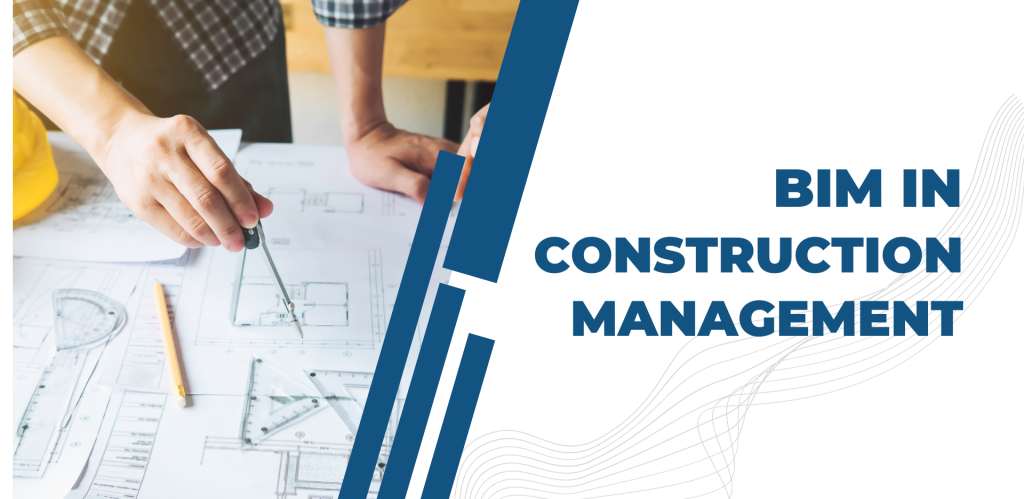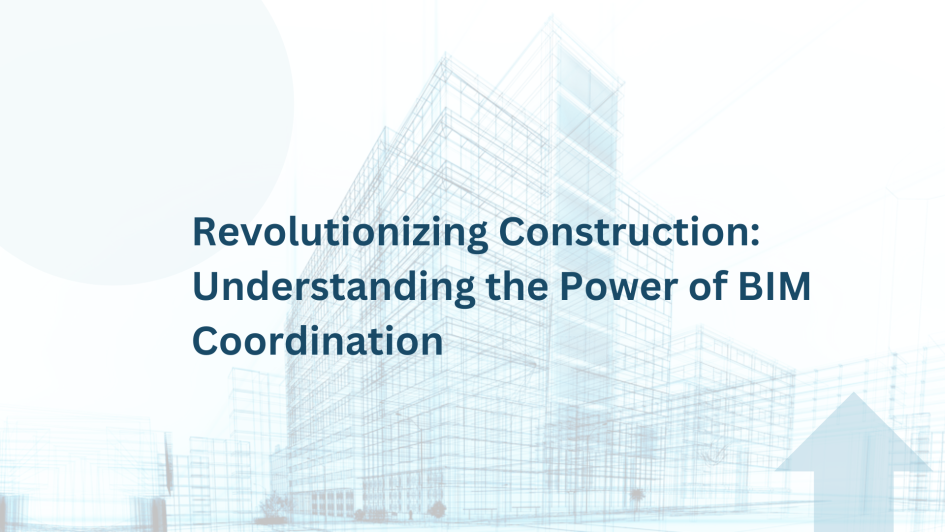In the world of construction management, technology has become an indispensable tool for improving efficiency and streamlining processes. Building Information Modeling (BIM) is one such technology.
BIM is a digital representation of a building or infrastructure project that incorporates all its physical and functional characteristics.
This article explores what BIM is, how it is used in construction management, the benefits it offers, and the future of BIM in construction management.
What is BIM?
BIM, short for Building Information Modeling, is a process that involves creating and managing digital representations of the physical and functional characteristics of a construction project.
It is a collaborative approach that integrates various aspects of the project, including design, construction, and operation, into a single information-rich model.
BIM enables stakeholders to visualize the project in a three-dimensional (3D) environment, facilitating better decision-making and coordination throughout the project lifecycle.
How is BIM used in Construction Management?

Construction management encompasses a wide range of activities, from project planning and scheduling to budgeting and resource allocation.
BIM plays a crucial role in streamlining these processes and improving overall project outcomes. Here are some key ways in which BIM is used in construction management:
1. Design and Visualization
BIM enables construction managers to create accurate and detailed 3D models of the project, including architectural, structural, and mechanical components.
These models provide a visual representation of the project, allowing stakeholders to identify and resolve design conflicts and make informed decisions before construction begins.
BIM also allows for virtual walkthroughs, helping clients and project teams visualize the final product and make design modifications if necessary.
2. Clash Detection and Coordination
One of the major challenges in construction projects is the clash or conflict between various building systems and components.
BIM helps in clash detection by integrating all the different models into a central model and identifying clashes between elements such as ductwork, plumbing, and electrical systems.
By resolving clashes in the virtual environment, construction managers can minimize rework and avoid costly delays during the construction phase.
3. Quantity Takeoff and Cost Estimation
BIM models contain detailed information about the quantities and specifications of building components.
Construction managers can extract accurate quantity takeoffs directly from the model, which serves as the basis for cost estimation and material procurement.
BIM enables faster and more accurate cost estimation, reducing the chances of cost overruns and helping project teams stay within budget.
4. Construction Planning and Sequencing
BIM can be used to develop construction schedules and sequencing plans.
By integrating the 3D model with the project schedule, construction managers can visualize the construction sequence and identify potential conflicts or inefficiencies.
This enables them to optimize the construction process, allocate resources effectively, and enhance productivity on-site.
How do Construction Managers use BIM?

Construction managers play a vital role in utilizing BIM effectively throughout the project lifecycle.
They are responsible for overseeing the implementation of BIM processes and ensuring that the project team maximizes the benefits of this technology.
Construction managers use BIM in the following ways:
1. Collaborative Project Management
Construction managers use BIM to foster collaboration among project stakeholders, including architects, engineers, contractors, and subcontractors.
They facilitate information sharing and coordination, ensuring that everyone is working from the same model and staying updated with the latest changes.
BIM acts as a central repository of project information, enabling seamless communication and reducing the risk of miscommunication.
2. Quality Control and Issue Resolution
Construction managers leverage BIM to monitor and control the quality of construction activities.
They can compare the as-built conditions with the digital model to identify any deviations or discrepancies.
By detecting issues early on, construction managers can take corrective measures promptly, ensuring that the project meets the required quality standards.
3. Risk Management
BIM allows construction managers to analyze and mitigate potential risks associated with the project.
They can simulate different scenarios, assess the impact of design changes, and evaluate constructability issues before construction commences.
By proactively addressing risks, construction managers can minimize project delays, cost overruns, and other undesirable outcomes.
Benefits of Using BIM Coordination
The adoption of BIM in construction management offers numerous benefits, transforming the way projects are planned, designed, and constructed.
Some of the key benefits include:
Enhanced Collaboration
BIM promotes collaboration among project stakeholders, fostering better communication and coordination.
Improved Design and Visualization
BIM enables stakeholders to visualize the project in 3D, leading to better design decisions and improved aesthetics.
Increased Efficiency
BIM streamlines construction processes, reducing rework, improving productivity, and optimizing resource allocation.
Cost Savings
BIM helps in accurate quantity takeoff, cost estimation, and procurement, leading to cost savings and improved budget management.
Reduced Risk
BIM allows for better risk management by identifying and addressing potential issues early on, minimizing project risks and uncertainties.
How can a Company can use BIM to improve the project planning process?

Let’s consider the example of a construction company that specializes in commercial building projects.
By implementing BIM in their project planning process, they can:
Visualize the project in 3D and identify potential design conflicts or clashes before construction begins.
Optimize construction sequencing and identify the most efficient construction methods, leading to improved productivity.
Generate accurate quantity takeoffs and cost estimates, allowing for better budget management and cost control. Collaborate with architects, engineers, and subcontractors in real-time, ensuring that everyone is aligned with the project goals.
Track the progress of the project in real-time, enabling proactive decision-making and issue resolution.
By leveraging BIM, the construction company can enhance its project planning process, reduce risks, and deliver projects on time and within budget.
Steps to getting started with BIM
If you’re interested in adopting BIM in your construction management processes, here are some steps to get started:
Educate Yourself
Familiarize yourself with the principles and concepts of BIM. Attend training programs or workshops to gain hands-on experience with BIM software.
Set Clear Objectives
Define your goals and objectives for implementing BIM. Identify the specific benefits you want to achieve and align them with your overall project goals.
Select the Right Software
Choose a BIM software that suits your project requirements and budget. Consider factors such as ease of use, compatibility with other software, and available support.
Train Your Team
Provide comprehensive training to your team members to ensure they are proficient in using the chosen BIM software. Encourage ongoing learning and skill development.
Start Small
Begin with a pilot project to test and refine your BIM processes. Evaluate the outcomes and lessons learned to make necessary adjustments for future projects.
Collaborate and Communicate
Foster a culture of collaboration and open communication among project stakeholders. Encourage regular meetings and information sharing to maximize the benefits of BIM.
Future of BIM in Construction Management
The future of BIM in construction management looks promising. As technology continues to advance, BIM is expected to become even more sophisticated and integrated with other emerging technologies.
Some key trends that will shape the future of BIM in construction management include:
Integration with Artificial Intelligence (AI) and Machine Learning (ML)
BIM can leverage AI and ML algorithms to automate repetitive tasks, analyze data, and provide valuable insights for decision-making.
Internet of Things (IoT) Integration
BIM can integrate with IoT devices to capture real-time data from construction sites, enabling better project monitoring and control.
Virtual and Augmented Reality (VR/AR)
BIM can be combined with VR/AR technologies to create immersive experiences, allowing stakeholders to virtually walk through the project and make informed decisions.
Cloud-Based Collaboration
Cloud-based BIM platforms enable seamless collaboration and information sharing among project stakeholders, regardless of their location.
Sustainability and Energy Analysis
BIM can be used to assess the environmental impact of construction projects and optimize energy efficiency during the building lifecycle.
As these trends continue to evolve, BIM will play a central role in driving innovation and transforming the construction industry.
Conclusion
By leveraging BIM, construction managers can streamline their workflows, reduce risks, and deliver projects more efficiently.
As technology advances, the future of BIM holds even greater possibilities, with integration with AI, IoT, VR/AR, and cloud-based collaboration.
Embracing BIM in construction management is a step toward a more sustainable, efficient, and collaborative construction industry.
FAQs
Can BIM be used for all types of construction projects?
Yes, BIM can be used for various types of construction projects, including residential, commercial, industrial, and infrastructure projects.
Do all project stakeholders need to be proficient in BIM software?
All project stakeholders don’t need to be proficient in BIM software. However, effective communication and collaboration among stakeholders are essential for maximizing the benefits of BIM.
Is BIM only useful during the design phase of a project?
No, BIM is valuable throughout the entire project lifecycle, from design and construction to facility management. It provides valuable insights and information that can be used at each stage.
Does implementing BIM require a significant investment in software and training?
Implementing BIM does require an investment in software and training. However, the long-term benefits, such as improved efficiency and reduced costs, often outweigh the initial investment.
Is BIM widely adopted in the construction industry?
BIM adoption varies across the construction industry. While some companies have fully embraced BIM, others are still in the process of transitioning to this technology. However, the trend toward BIM adoption is increasing as its benefits become more apparent.
Read our other blogs here :
Traditional vs BIM : Why Coordination Makes All the Difference
Ultimate Benefits of BIM in the Construction Industry
How to ensure seamless construction management with BIM and its effect on the AEC industry?




Leave a Reply